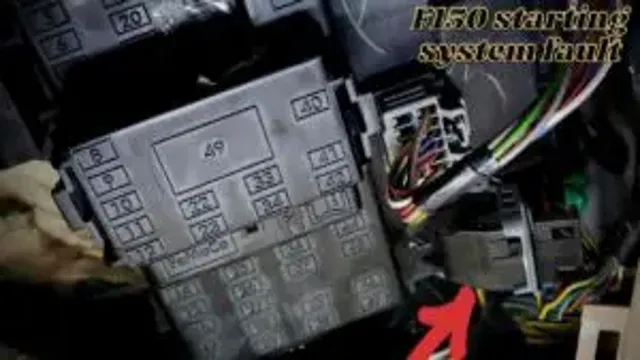Every driver has experienced the disconcerting moment when their car refuses to start, leaving them stranded and perplexed. One of the most common culprits behind this automotive conundrum is a starting system fault. In this comprehensive guide, we will delve into the intricacies of the starting system, identify the telltale signs of its malfunction, and empower you with the knowledge and steps to resolve this vexing issue.

Image: motorriderz.com
Delving into the Heart of the Starting System
The starting system serves as the bridge between the electrical energy stored in your car’s battery and the combustion engine that propels it. It consists of several key components: the battery, starter motor, ignition switch, and a complex network of electrical connections. When you turn the ignition key, a signal is sent through the electrical system, causing the starter motor to engage with the engine’s flywheel. This engagement initiates the cranking process, which, if all components are functioning properly, culminates in the ignition of the engine and the joyful sound of your car roaring to life.
Unveiling the Symptoms of a Starting System Fault
Recognizing the telltale signs of a starting system fault is crucial for swift diagnosis and repair. Here are some common symptoms to watch out for:
-
Complete Silence: When you turn the ignition key, you encounter an eerie silence, devoid of any cranking or engine noises. This indicates a potential issue with the battery, starter motor, or electrical connections.
-
Sluggish Cranking: The engine cranks slowly and hesitantly, as if struggling to muster enough energy to start. This could point to a weak battery, a faulty starter motor, or worn ignition contacts.
-
Repeated Cranking with No Start: You may repeatedly crank the engine without any success, causing frustration and the dreaded realization that your car is not going anywhere anytime soon. This persistent failure to start typically indicates a more substantial problem that requires professional attention.
-
Clicking Sound During Cranking: As you turn the key, you hear a series of rapid clicking sounds, reminiscent of a machine gun. This clicking often signifies a drained battery or a weak connection between the battery, starter motor, and engine.
Diagnosing the Culprit: A Step-by-Step Guide
-
Check Battery Health: Inspect the battery terminals for corrosion or loose connections. Use a voltmeter to verify the battery’s voltage, which should ideally be around 12.6 volts. If the battery is significantly below this level, it may need recharging or replacement.
-
Test Starter Motor: Locate the starter motor and give it a gentle tap with a hammer or wrench. If this prompts the car to start, the starter motor may be seized or jammed. Further inspection and repair are necessary.
-
Inspect Ignition Switch: The ignition switch, the gatekeeper of electrical signals to the starter motor, can also be a source of trouble. Check for loose connections, corrosion, or a faulty switch that fails to send the necessary signals.
-
Examine Wiring Harness: A thorough examination of the wiring harness is essential for detecting any breaks, frayed wires, or loose connections that may disrupt the electrical flow. Repair or replace faulty wiring promptly.

Image: howtofix.one
Empowering Your Resolution: DIY Starting System Fixes
While some starting system faults require professional intervention, others can be tackled with a DIY approach. Here are some common fixes you can attempt yourself:
-
Cleaning Battery Terminals: Disconnect the battery and use a wire brush to clean the terminals and cable ends, removing any corrosion or grime. Reattach the connections securely.
-
Replacing Ignition Contacts: Access the ignition switch and replace worn or damaged contacts, ensuring a proper electrical connection between the key and the starter motor.
-
Fixing Faulty Wiring: If you have isolated a damaged wire, carefully repair it using electrical tape or solder and heat shrink tubing. Ensure proper insulation to prevent short circuits.
How To Fix Starting System Fault
When to Seek Professional Help
Certain starting system faults, like a defective starter motor or a compromised ignition switch, often necessitate the expertise of a qualified mechanic. Their specialized knowledge and access to diagnostic tools enable them to determine the exact cause of the problem and implement the appropriate repairs.
In conclusion, a starting system fault can be a perplexing automotive issue, but with a combination of knowledge, a systematic approach, and a willingness to tackle DIY repairs, it can be resolved swiftly, empowering you to conquer any future problems and resume your smooth driving experience. Remember, if the issue persists or exceeds your comfort level, do not hesitate to seek professional assistance to restore your car to pristine condition.







